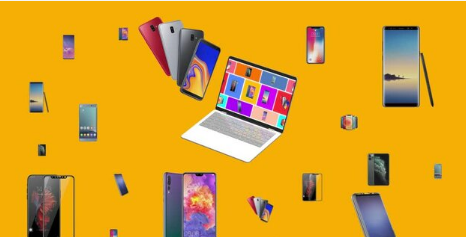In a world where privacy and data protection are more important than ever, encrypted file transfers have become a necessity rather than a luxury. Whether you’re sharing sensitive work documents, personal photos, or financial information, you want to ensure that your files are protected from interception, hacking, or unauthorized access.
For iPhone and Samsung users, this can feel tricky since both operate in different ecosystems (iOS vs. Android). But the good news is: there are several secure, encrypted file transfer solutions that work across both platforms.
This guide explores the best options available and how to use them effectively.
Why Encryption Matters in File Transfers
Encryption ensures that files are scrambled into unreadable code during transfer and can only be unlocked with the correct key or password. Without encryption:
- Hackers can intercept files on unsecured networks.
- Sensitive information can be leaked or misused.
- File integrity might be compromised.
Simply put: encryption keeps your files private and safe—whether you’re sharing across iPhone, Samsung, or even with a computer.
1. End-to-End Encrypted Messaging Apps
One of the easiest ways to transfer encrypted files is through messaging apps that support end-to-end encryption (E2EE).
- Supports end-to-end encryption for chats and file transfers.
- Works seamlessly across iPhone and Samsung.
- File size limit: 100MB for documents, 16MB for videos/photos.
Signal
- Known as one of the most private messengers.
- All file transfers are fully encrypted.
- Supports larger files than WhatsApp and doesn’t track user data.
Telegram (Secret Chats)
- Standard Telegram chats are not fully E2EE, but Secret Chats are.
- Allows encrypted file sharing with more control over message timers.
✅ Best For: Secure casual file sharing.
❌ Downside: File size limits and compression may affect quality.
2. Encrypted Cloud Storage Services
Cloud services allow large files to be shared securely across iPhone and Samsung. The key is to pick providers that offer strong encryption.
Google Drive & OneDrive
- Encrypt files in transit and at rest.
- Support large files (up to 5TB with paid plans).
- Work smoothly across platforms.
iCloud Drive
- Works best for iPhone users, but files can be shared with Samsung users via links.
- Uses encryption during transfer and storage.
Dropbox with Password-Protected Links
- Allows secure sharing with added password protection.
- End-to-end encryption is not default, but advanced security settings help.
✅ Best For: Sharing large files between devices.
❌ Downside: Relies on account security (use strong passwords + 2FA).
3. Secure File Transfer Apps
If you want direct device-to-device encrypted transfers, these apps work well across iOS and Android.
Send Anywhere
- Uses 6-digit keys or QR codes for encrypted file transfers.
- No compression, keeps original quality.
- Works offline with Wi-Fi Direct.
SHAREit / Xender (with encryption enabled)
- Support Wi-Fi Direct transfers, encrypted if enabled.
- Very fast for large files.
✅ Best For: Fast, encrypted local transfers.
❌ Downside: Free versions may include ads.
4. Encrypted Email Services
If you need to send documents securely via email:
ProtonMail
- End-to-end encrypted email service.
- Allows file attachments with full encryption.
- Works on both iPhone and Samsung apps or browsers.
Tutanota
- Another privacy-first encrypted email provider.
- Includes encrypted file attachments and storage.
✅ Best For: Business or professional file transfers.
❌ Downside: File size limits (25MB–50MB depending on provider).
5. Password-Protected File Archives
If you prefer full control over your files:
- Use apps like WinZip, 7Zipper, or iZip to compress files into encrypted ZIP or RAR archives.
- Add a strong password.
- Share via cloud or direct transfer.
✅ Best For: Extra security layer before sharing files.
❌ Downside: Less convenient for quick transfers.
6. VPN for Safer Transfers
While not a file-sharing tool by itself, using a VPN (Virtual Private Network) ensures that your internet traffic is encrypted during transfers. This is especially important when:
- Using public Wi-Fi.
- Uploading/downloading from the cloud.
- Sending sensitive documents.
Popular VPNs like NordVPN, ExpressVPN, or ProtonVPN work seamlessly across iPhone and Samsung.
Best Practices for Secure Transfers
- Always enable two-factor authentication (2FA) on cloud accounts.
- Avoid free, unknown apps—stick to verified platforms.
- Double-check permissions before installing any transfer app.
- Use strong, unique passwords for encryption.
- Wipe old devices if you’re selling or recycling them.
Final Thoughts
Yes, iPhone and Samsung users can share files securely with encryption—but the method depends on your needs:
- For quick encrypted sharing → WhatsApp, Signal, or Send Anywhere.
- For large file storage and access → Google Drive, OneDrive, or Dropbox with security settings.
- For maximum privacy → Encrypted email services like ProtonMail or password-protected ZIPs.
At the end of the day, encryption isn’t just about security—it’s about peace of mind. By choosing the right tools, you can ensure your personal and professional files remain private, no matter which platform you’re using.
Also Read :
